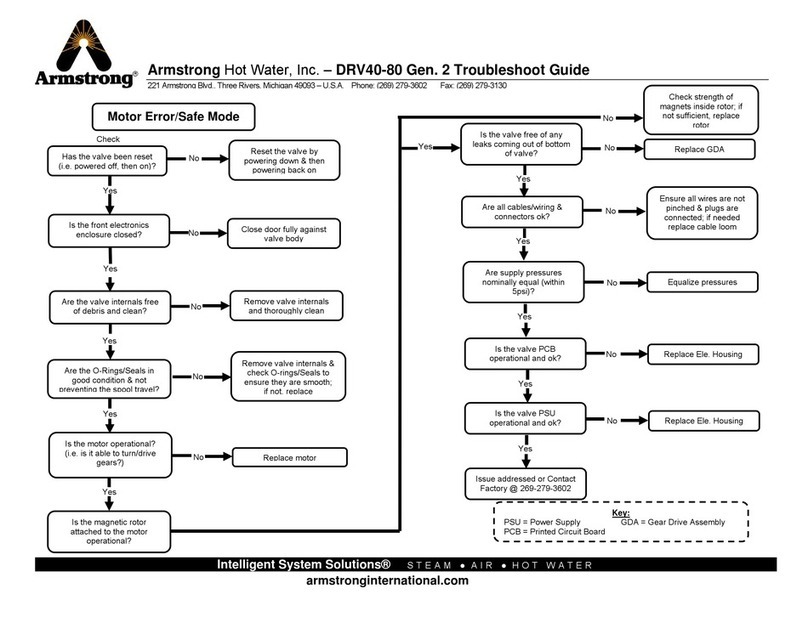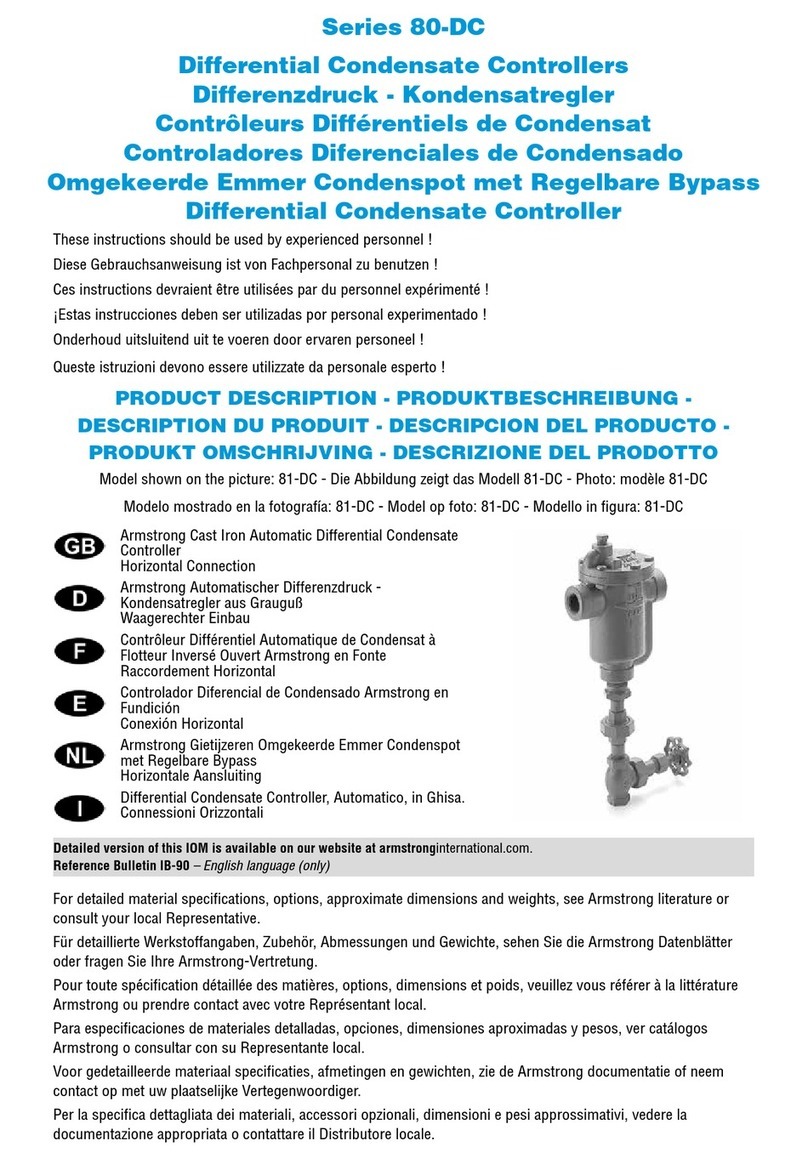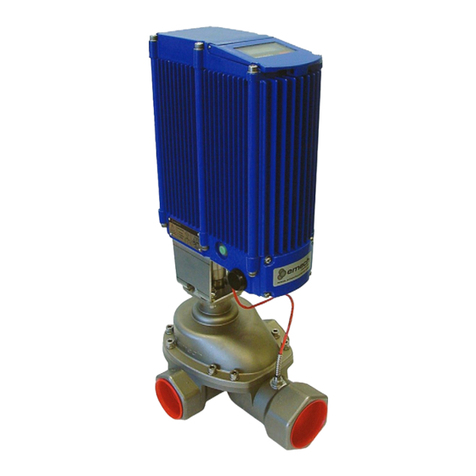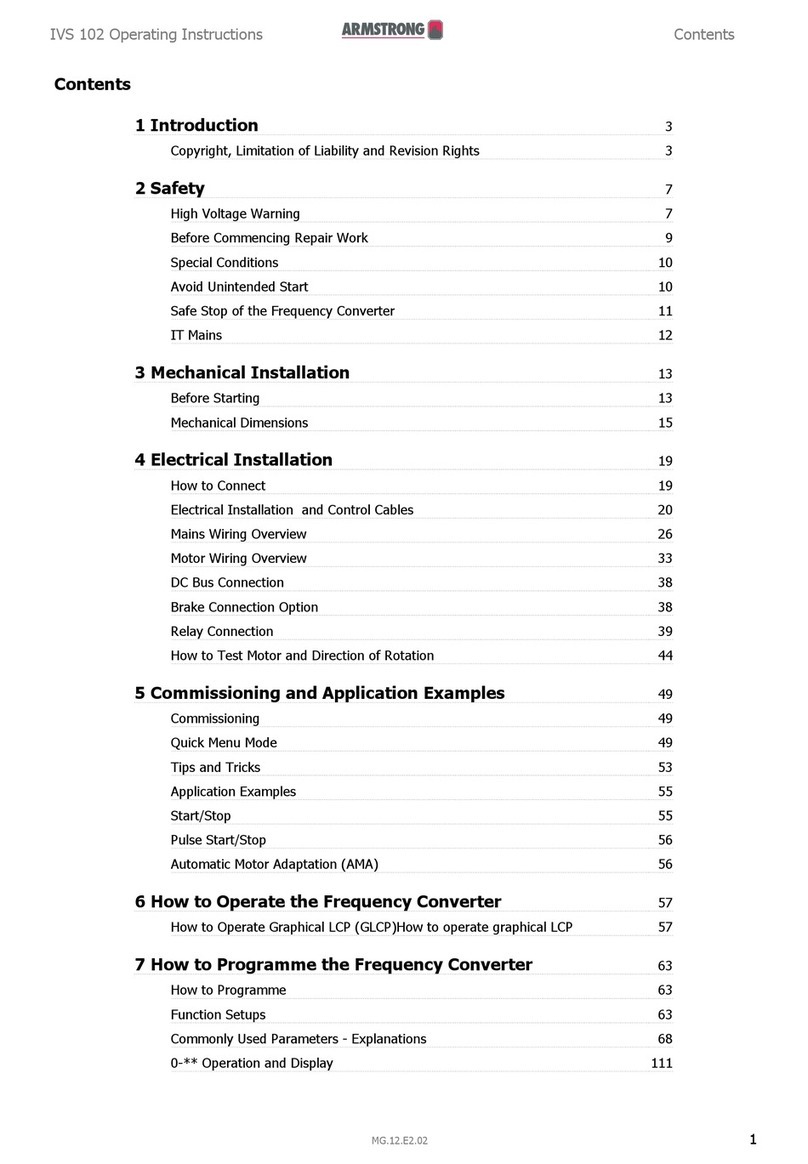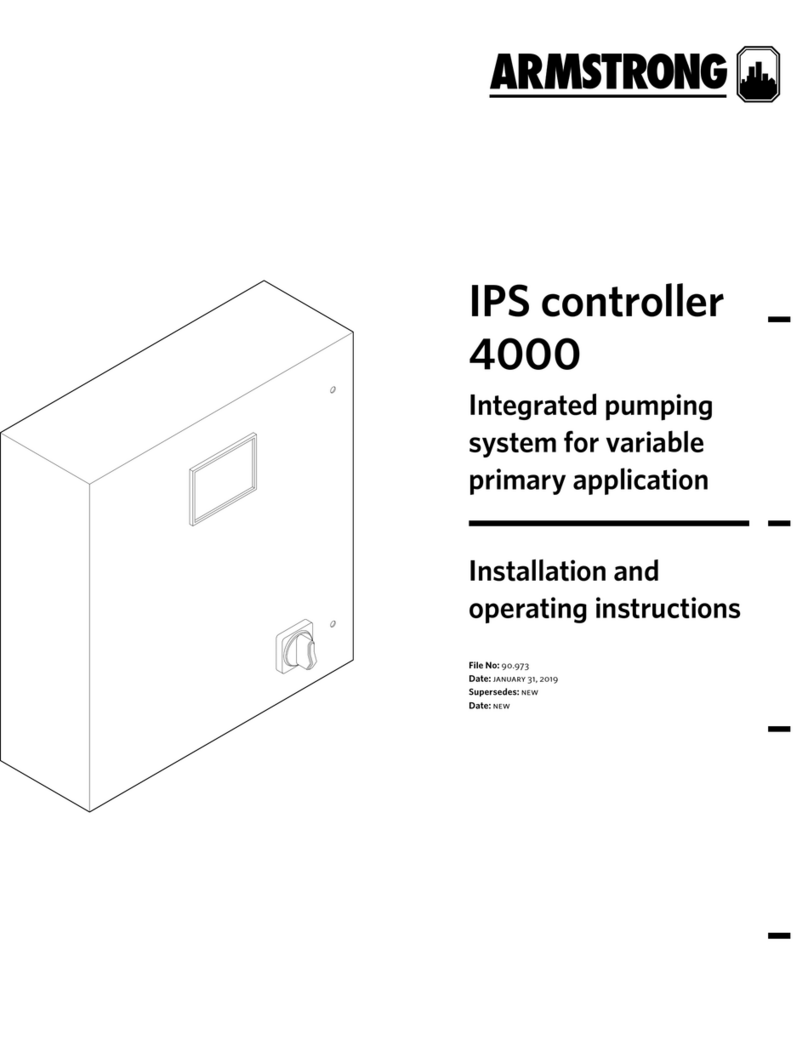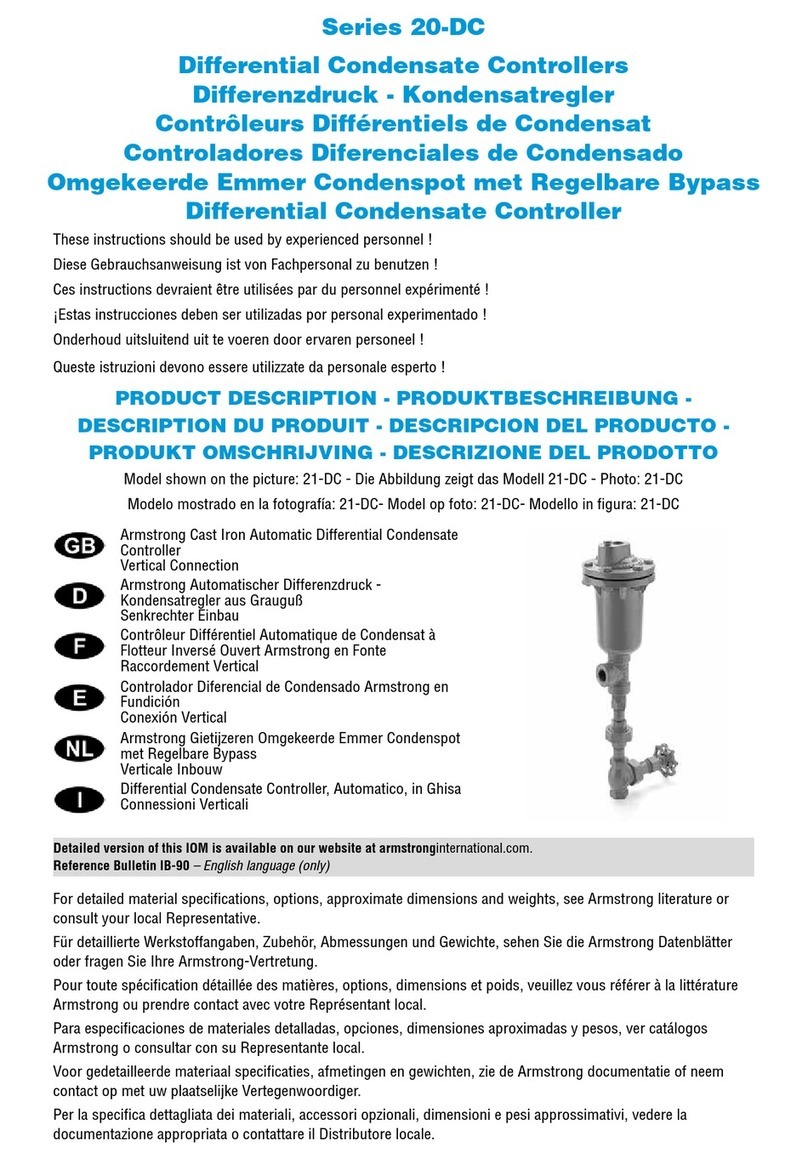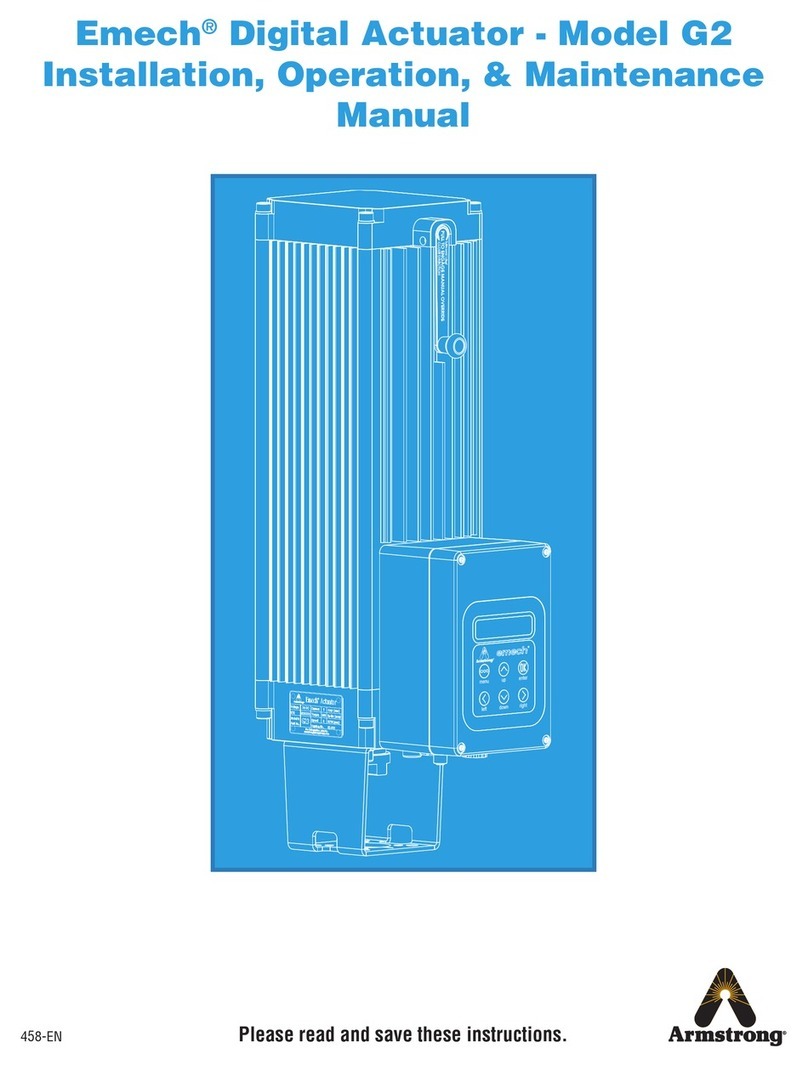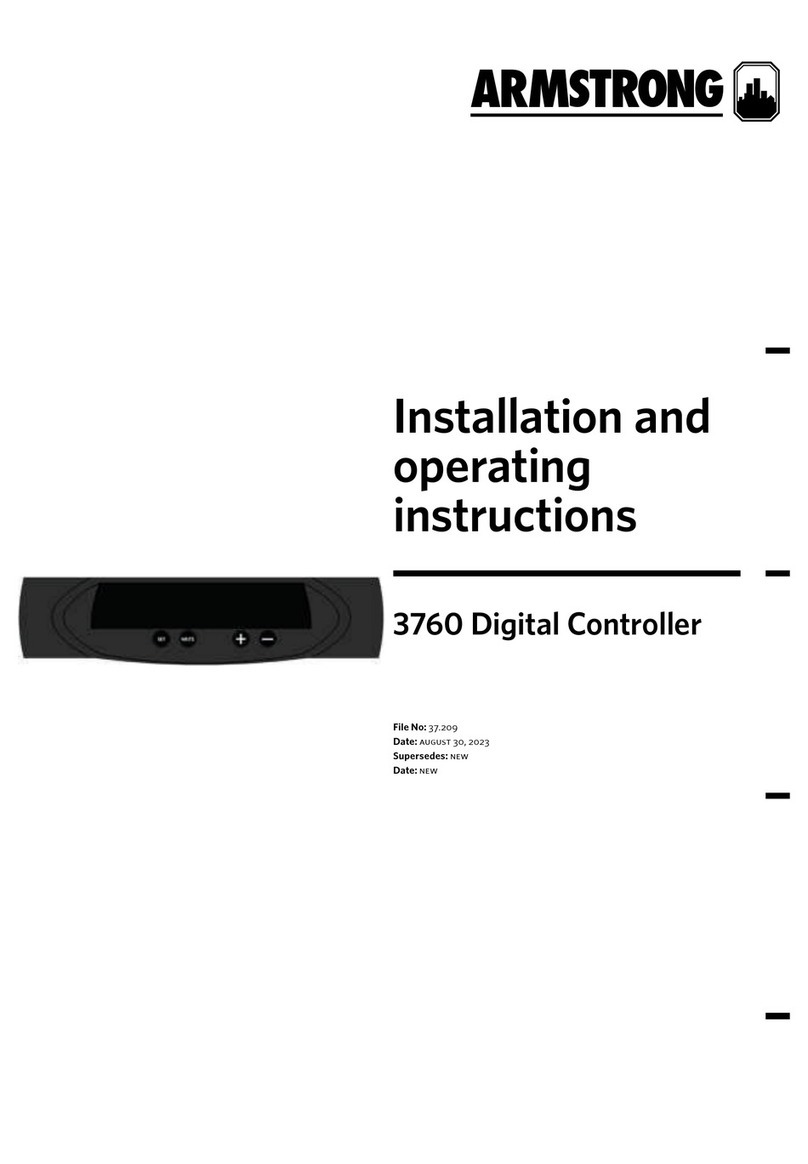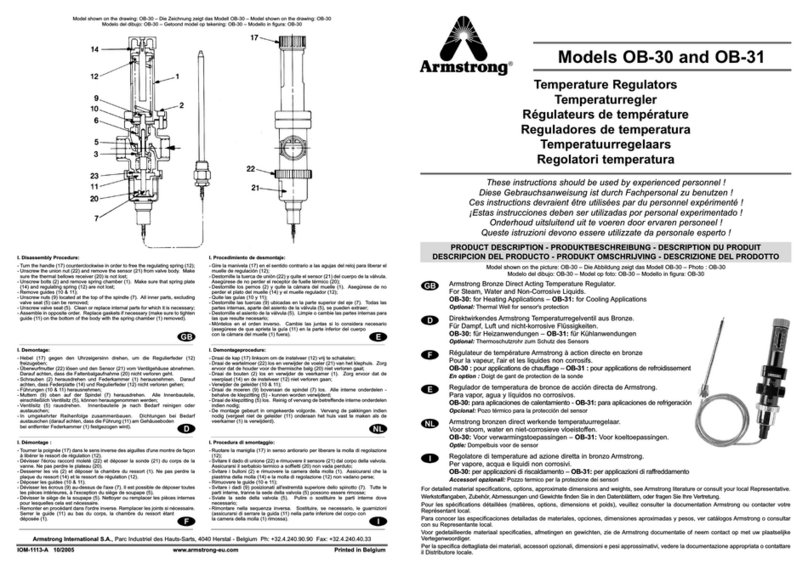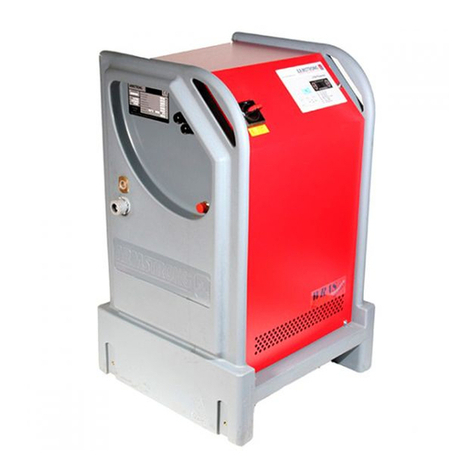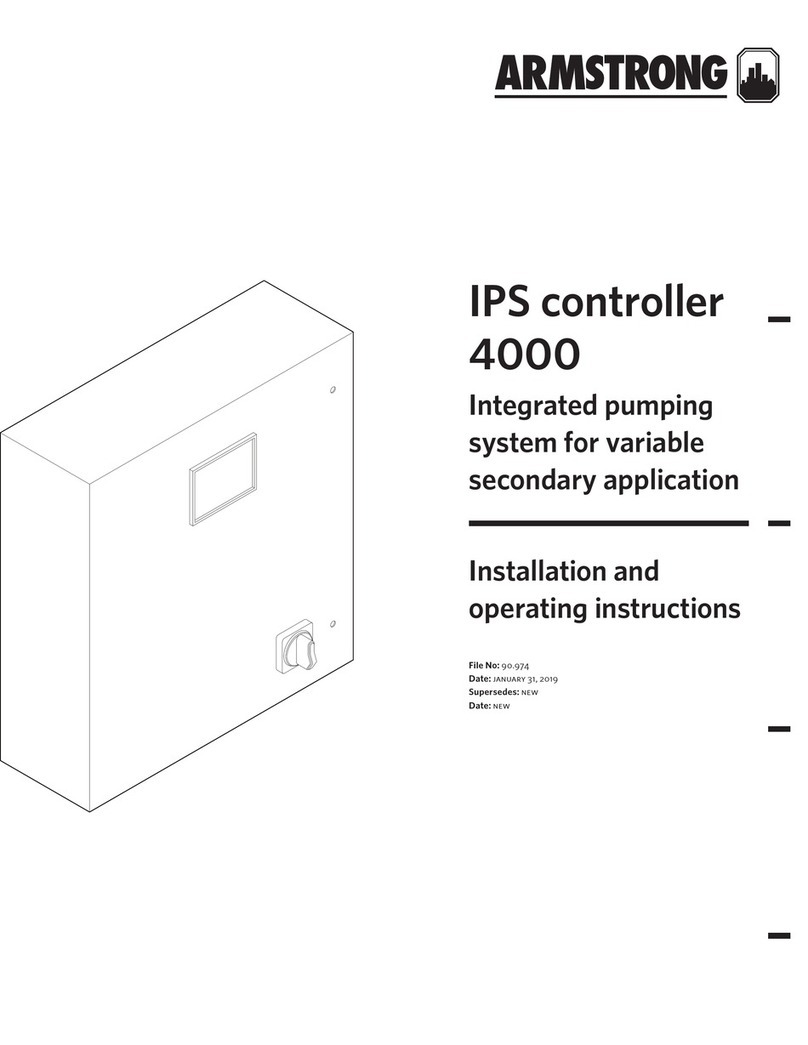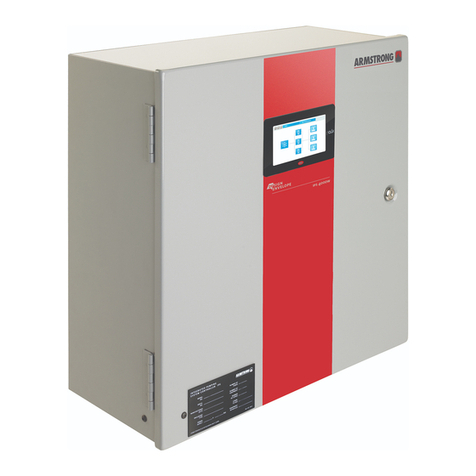
2
Te e
C-Tube
Elbow
New Type Tubing Old Type Tubing
Fitting A
Check Mark
Fitting B
Fitting A
Groove
(has to be on top)
Fitting
Orifice
(Reduced Port)
Orifice
(Reduced Port)
Te e Te e
Elbow Elbow
Fitting B
B-Tube
Fitting A
A-Tube
Relieving Pressure Color Code
3to21psig Yellow
14 - 157 psig Green
143 - 200 psig Brown
Spring Chart
Confirmthevalvesbeforeandafter theregulatorare
closed, including the valve in the control pipe. Also, make
surethat nopressure anddrainage remainsinsideofthe
regulator.
Disassembly
Pilot valve (Figure 3-1)
1. Slightly loosen lock nut (28) and turn adjusting screw
(27)counterclockwise torelease adjustingspring (24)
(nocompression).
2. Remove bolts(37)of springhousing (3). Removethe
springhousing, spring,topspring plate(25), bottom
springplate (26),and pilotdiaphragms (23).
3. Removeseal bellows(61) usingaringspanneror
socketwrench andremove gasket(62),pilot valve(63),
andpilot valvespring(64).
4. Removepilot valveseat (65)using asocketwrench.
Main valve (Figure 3-1)
1. RemovepipeA(34)at fitting(30A) andtee (33).
2. Fornominal sizes1/2” to1-1/2”, removebolts(38) of
pilot body (2). Dismount the pilot body from the body
(1). Andremove screen(15), springplate (14),main
valvespring (13)and mainvalve(6). Forseries2” to
6”,remove boltsof adapterplate andadapterfrom the
mainbody (1). Removemainvalve spring(13)and
mainvalve(6).
Main diaphragm (Figure 3-1)
1. Removepipe C(36) attee(33).
2. Removebolts (41)of bottomdiaphragmcase(5).
Dismountthe bottomdiaphragmcase,maindia-
phragms(12), retainer(11),and spindle(9). Checkthat
spindlemoves upand downfreely andthat noparticu-
late or scale build-up is obstructing its performance.
Reassembly
1. Checkthat thereis nodamage onthemain valve,
mainvalve seat,pilot valve,and pilotvalveseat. If any
scratches exist on the seating surface of valve seat,
they may cause an increase in outlet pressure and
excess temperature. When any scratches exist on
themain valveand valveseat,carryoutlapping to
remove them. If it is not possible to remove them,
replace with new parts. When any scratches exist on
thepilot valveand valveseat,replacewithnew parts.
2. Movethe slidingsection (pilotvalve, mainspindle,
etc.) two to three times and confirm they move
smoothly. If they do not move smoothly, original
performancemay beaffected.
3. Replacegaskets withnew oneswhen disassembling.
Steam may leak if gaskets are reused.
4. Afterthe mainvalve, spring,and springplate are
assembledcorrectly, mountthe maindiaphragm.
Incorrect assembly may affect the original perfor-
mance.
5. Carry-outre-assembling inreverseorder ofdisassem-
bling. Tighten all hexagon bolts evenly on each bolt in
turnof diagonalposition. When re-assemblingthe
productin thewrong order,proper functionmay notbe
possible. Uneventighteningof boltsmay cause
leakageof steam.
New Tubing Set-Up
Theexternal tubingfor ourGP-2000Rseries hasbeen
modifiedto enhancethe performanceof thesemodels.
Thefollowing explainsthedifferencebetweenthe oldand
new tubing assembly. It is important to have these fittings
inthecorrect locationin orderto getoptimum performance
from these valves. It is very important that the old and new
tubing assemblies are not mixed. The location of all
fittings is critical and should not vary from the assembly
instructions.
New Type Tubing
Figure 5-1
Note: Fittings and tee are to be located in similar positions
forall GP-2000models.
